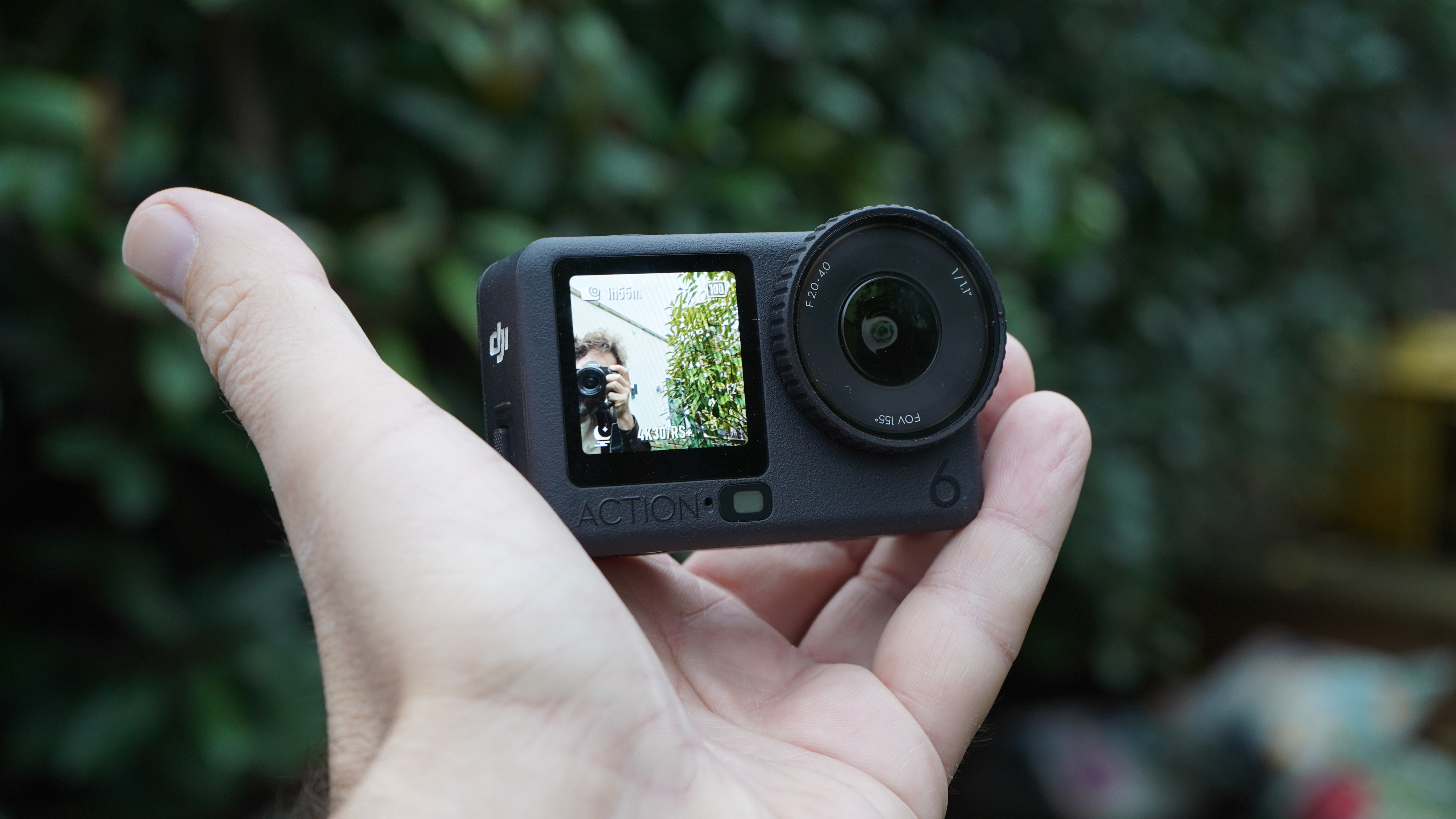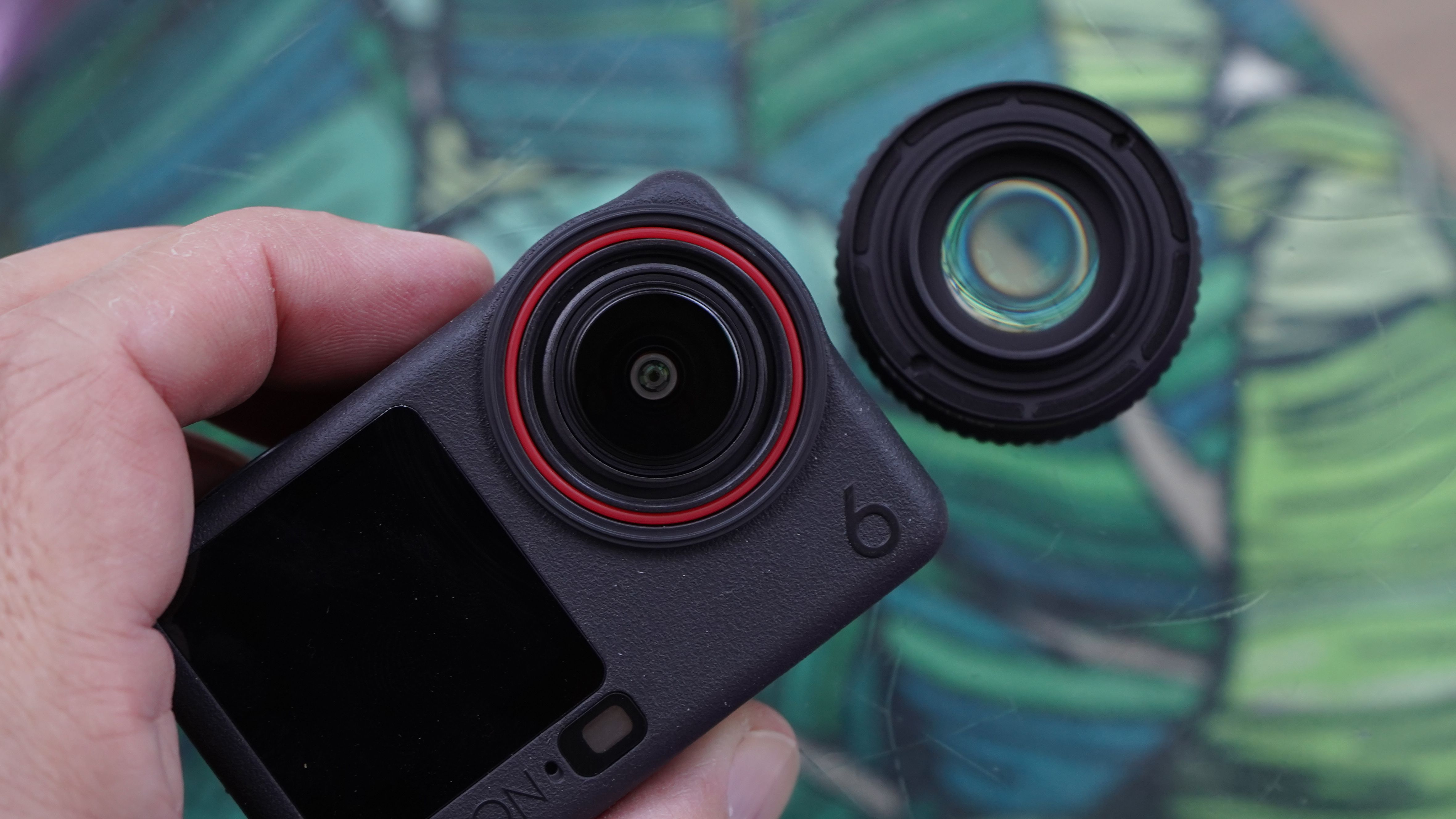Digital Camera World Verdict
The Osmo Action 6 is much more 'pro' than its predecessor, with almost every feature you could ask for in this camera category. Quality is striking, the build is robust, the battery lasts, and I didn't get it to overheat in my tests. Changing lenses has been done, but setting the aperture is all new, making this quite the tech showcase – but it's real, it works, and I'm impressed!
Pros
- +
Adjustable aperture
- +
Swappable lenses offer control over focusing distance and field of view
- +
Still leads the pack in low-light
- +
You can re-frame portrait/landscape after the fact.
Cons
- -
Image sensor's bigger size is only relevant for multi-angle
- -
US government isn't going to make it easy to get this for Americans!
Why you can trust Digital Camera World
Most people still call action cameras 'GoPros' but the camera I've picked to top DCW's guide to the best action camera, for a few years now, has been DJI's offering. That's because – while GoPro has made some exciting leaps – DJI managed to make a camera that just worked better in low light AND kept up with, or exceeded, most of the other offerings too. They did that with a bigger image sensor and there is no marketing your way out of that.
This year, for the first time in a while, GoPro didn't even update its main 'Hero Black' action camera, concentrating on the (admittedly impressive) Max 2 360 camera, but DJI has diligently turned out a fresh version of the Osmo Action, its equivalent. Now I've got the device in hand,
Oddly, in a world where size matters, it's a very tiny bit bigger than its predecessor. DJI can now point you to the Osmo Nano if you want ultra compact, so perhaps that's allowed. In exchange, there is a significantly larger image sensor again – 1/1.1-inches. So we're going to get even better low-light performance? Well perhaps – but there is a bit more to it than that, as I'll explain.
There is also the option to change lenses this time (admittedly, GoPro got there first). Still, an adjustable aperture, changeable lenses, and a big sensor? Is this a 'real' camera? Let's see...
DJI Osmo Action 6: Pricing
Launching in November 2025 – although a little tricky to get hold of in the USA thanks to government trade restrictions – the launch price is £329 (around $433, though British pricing includes a 20% sales tax) for the standard combo, and £415 for the Adventure Combo (around $546), which is what I tested.
This is at the higher end for an action camera, but is, in essence, a useful pro bundle. Also, usefully, for DJI creators, the 3 batteries and charging hub are the same 1950mAh which are used in – and so are interchangeable with – the Osmo 360.
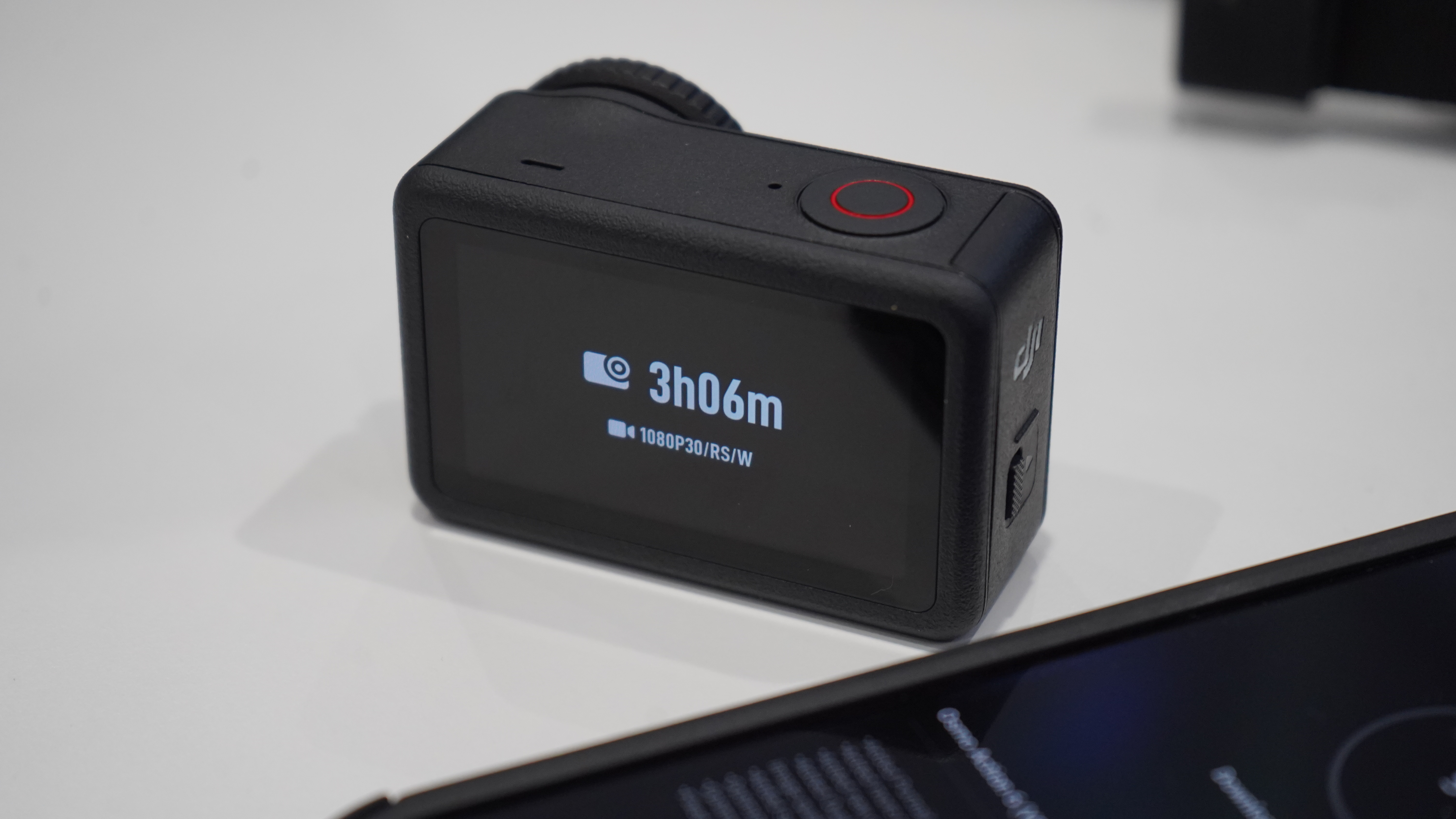
DJI Osmo Action 6: Specs
Image sensor: | 1/1.1 - inch square |
Aperture: | ƒ/2.0 - ƒ/4.0 |
Max video resolution: | 4K |
Maximum frame rate: | 120fs at 4K, 240fps at 1080P |
Best Slow-Mo | 1080P at 960fps |
Photo resolution: | 3648 x 2736 px |
Waterproof: | 20m / 65ft |
Storage: | 50GB built-in + microSD (records at 130Mbps) |
Displays: | Main 2.5-inch 400 x 712px, Front 1.46-inch 320 x 320px |
Microphones: | 3 |
Weight: | 149g |
Dimensions: | 72.8 x 47.2 x 33.1mm |
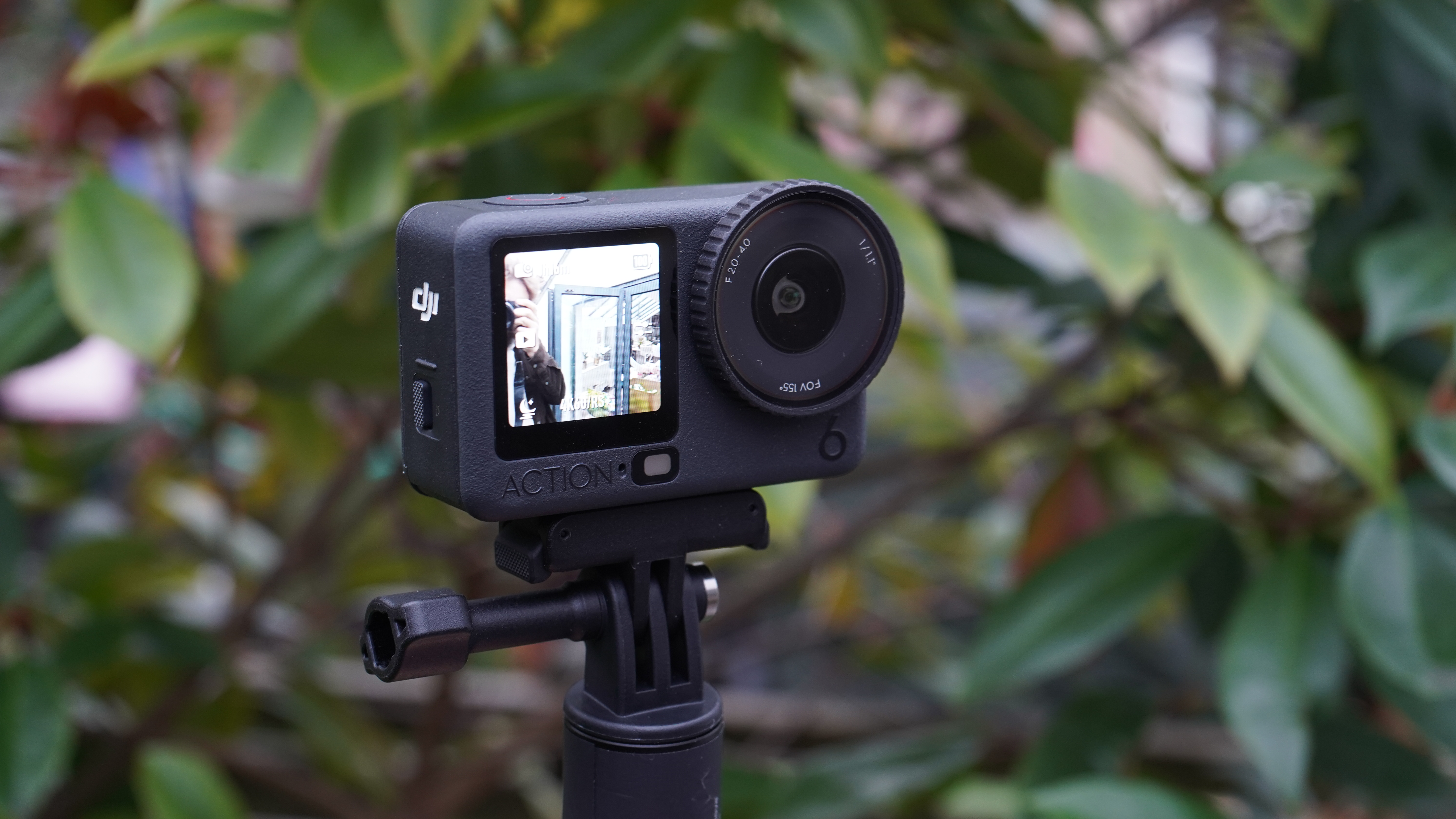
DJI Osmo Action 6: Build & handling
The new Osmo Action 6 has grown, in width and height (but not depth) by about three millimeters from its predecessor, but that's not really a change you'd notice unless you put the devices next to each other. The first thing I saw was the lens looks bigger, there is a new sensor beneath the front touchscreen, and, on the aesthetic side, there is a rather stark lack of coloring. It's all black, save for a bit of white text and a red rim on the shutter button. It feels more 'pro' than ever, even though it's dropped the moniker.
The best camera deals, reviews, product advice, and unmissable photography news, direct to your inbox!
On the base of the camera is DJI's magnet-assisted clip system and in the box are attachments which will connect it to the now slightly old-school – but very well established and reliable – three-pronged mount which has been around since the early days of GoPro. It is one of these which is used to attach the camera to the selfie stick in the 'Adventure Combo', and allow easy angle adjustment.
At either side of the camera are flaps, one for a USB-C port and the other for the battery and access to the MicroSD card slot. It is possible to live without a MicroSD card at all thanks to the built-in 50GB of memory, and the USB-C port can be one means of downloading files. You can also send them to your phone via the DJI Mimo app which has definitely got a good bit friendlier over the years. This is also your only means of charging the battery if you opt for the single battery camera – if you have a combo you get a charging hub (elegant, simple with a sprung lid) so you can charge some outside the camera.
Admittedly as a DJI drone users I missed the 4-light progress indicators; the hub gives you single LEDs that change from orange to green when the batteries are charged, but realistically, that's all you'll need.
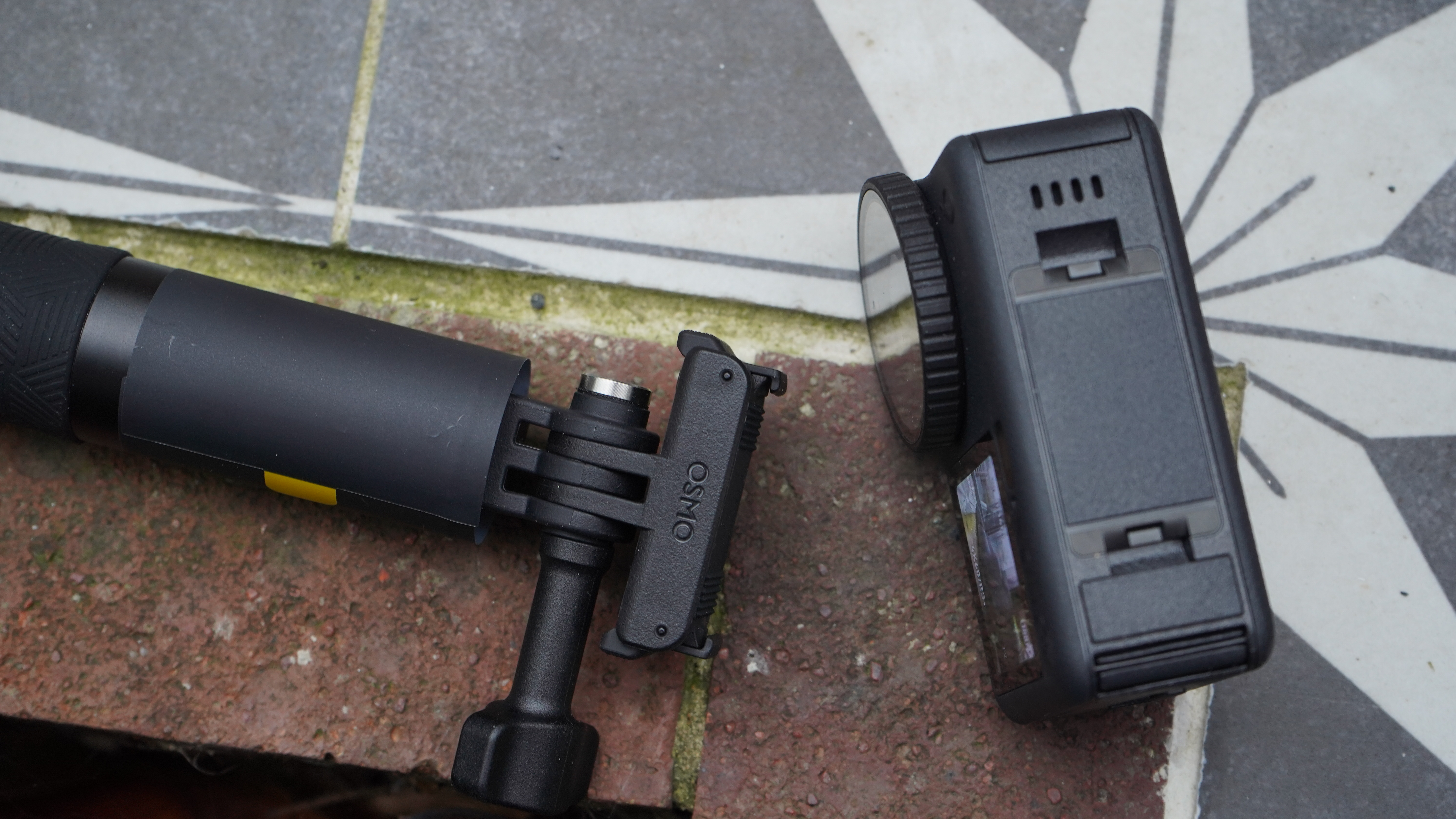
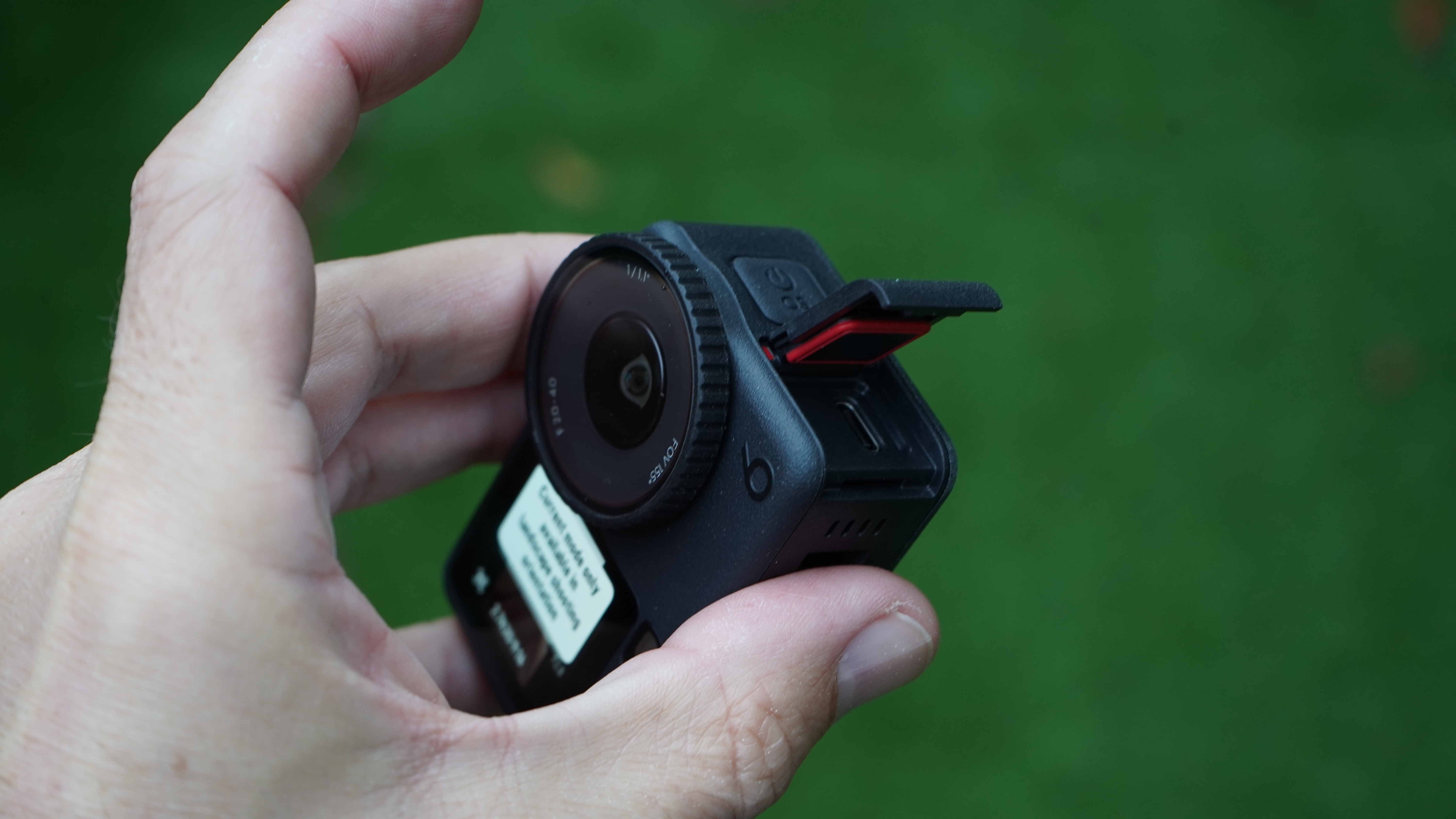
Waterproofing is clearly a high standard. The flaps have small sliders and rubber inside, so it's easy to believe the camera can go the full 20m before needing a case.
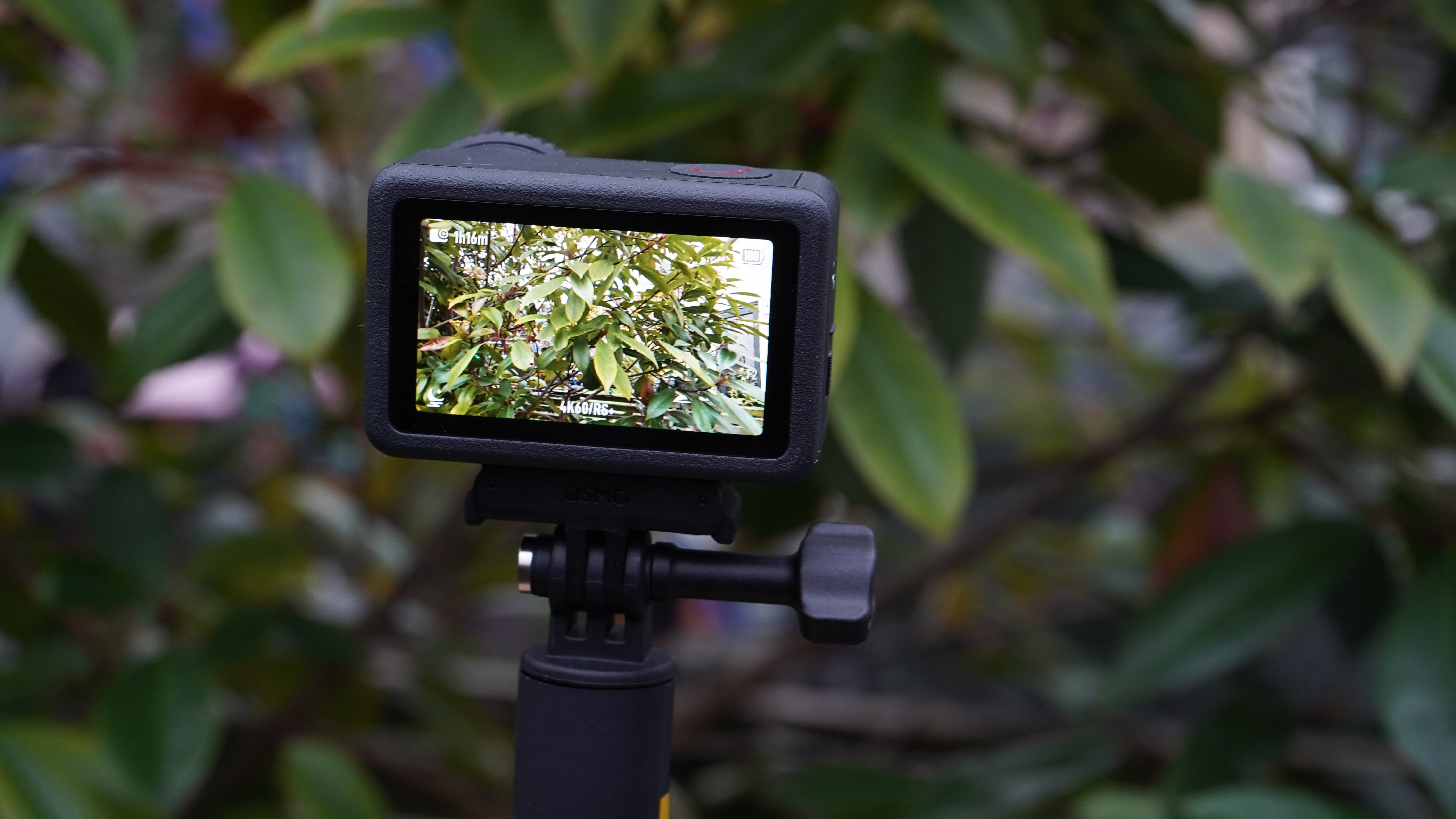
Otherwise, there are just two buttons – the shutter at the top and the power on the side. This is because most control can be achieved via the even bigger touch screen, and I found this mechanism very responsive for the most part. The 326ppi is sharp, and the screen is bright. DJI also offer tool tips in the corner with an 'i' icon but don't swamp you with them, which feels handy much of the time.
DJI Osmo Action 6: Performance
In use, I found the camera very responsive indeed, and reviewing the video left me reasonably pleased with the quality.
I honestly don't think we're looking at a huge leap forward in quality from the Action 5 Pro, the camera's predecessor, when it comes to standard 16:9 video – though that was already comfortably ahead of the GoPro.
The fact there is now an option to shoot in 1:1 and crop in the DJI Mimo app – retaining excellent low-light performance – is what keeps this camera ahead of the game while at the same time moving one of the last advantages of the GoPro out of the way. And for me that GoPro advantage was never that impressive on a smaller imaging sensor anyway, because low-light video wasn't so good.
DJI Osmo Action 6: Sample Video
My first sample video is all in low light or dark, and shot using the built-in microphones in difficult conditions. It's a 'worst case' scenario, basically. As such, I think we're looking at very good performance for an action camera.
Had I wanted better audio quality, the device can connect direction to the DJI Mic Mini which would have eliminated a lot of the background sounds (or I could have tried something in the editing app for a similar, if less perfect, effect).
DJI Osmo Action 6: Sample Pics

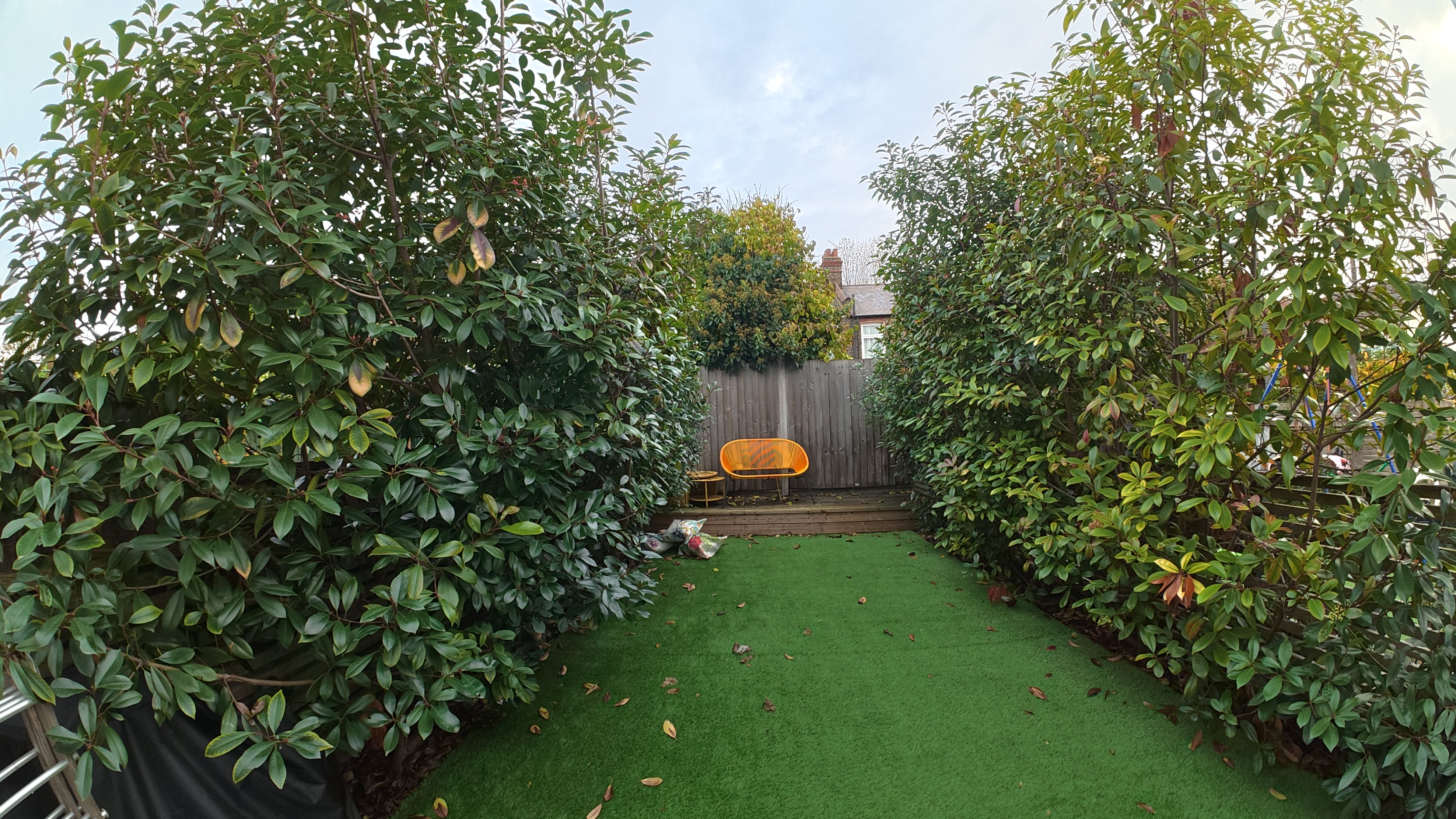
Coming soon, I promise, a shot with the Macro Lens. After all, the big plus of the variable aperture is control over the focusing distance. That is as close as 20cm – or 11cm with the lens – much better than before.

Overall Verdict
The DJI Action 6 is, inevitably, the most capable action camera out there, showing up with the kinds of features needed by an evolving market. Creators want the rugged build, but with a greater variety of situations being recorded with these super compact cameras than the early days it makes sense to have more creative control and this beats all its competitors.
The arrival of the screw on lenses, along with compatibility with DJI's existing and well-proven system of attachments, and the square image sensor system (already proven in the Osmo 360), which clearly helps the image stabilization system and works so well in low light compared to other action cameras, all amount to a superbly powerful device – and the build quality is exactly what is needed in this category too!
I must admit to some worries about whether a system with more moving parts (the variable aperture) inside, will hold up in the long run. DJI, of course, can offset this with its DJI Care schemes, and I saw no evidence that the camera wasn't performing in my testing so far, so that is just a theoretical worry.
Ultimately, this is the camera I'd choose for so many real-life situations, whether vlogging or documenting my walking or cycling (and, perhaps, if I get back on my snowboard one day soon).
Features ★★★★★ | The square image sensor brings free cropping (after the fact) with no loss of low-light capability to an already powerful device. |
Design ★★★★☆ | Simple and practical, there is little to argue about with this camera, and the attention to detail is solid too. |
Performance ★★★★★ | Excellent battery life, better image than competitors, and very snappy controls. |
Value ★★★★★ | This feels like a personal choice. There is a slight price step, but a real step up in many areas of performance. |

With over 20 years of expertise as a tech journalist, Adam brings a wealth of knowledge across a vast number of product categories, including timelapse cameras, home security cameras, NVR cameras, photography books, webcams, 3D printers and 3D scanners, borescopes, radar detectors… and, above all, drones.
Adam is our resident expert on all aspects of camera drones and drone photography, from buying guides on the best choices for aerial photographers of all ability levels to the latest rules and regulations on piloting drones.
He is the author of a number of books including The Complete Guide to Drones, The Smart Smart Home Handbook, 101 Tips for DSLR Video and The Drone Pilot's Handbook.
You must confirm your public display name before commenting
Please logout and then login again, you will then be prompted to enter your display name.

